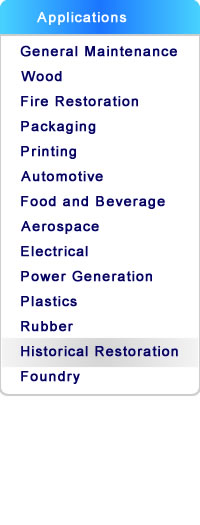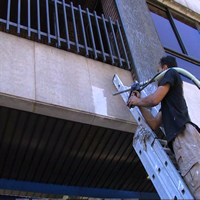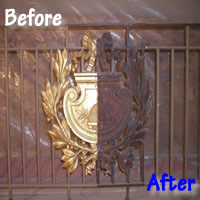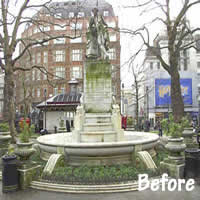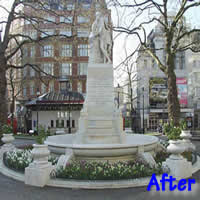|
• Reduce cleaning time up to 80%
Make History Beautiful!
Dry Ice Blasting offers restoration contractors a cleaning method that creates value for their business. No other cleaning method can uncover the detail and intricacies of historic structures with the efficiency and cleaning ability.
Restoration contractors a cleaning method that creates value for their business. No other cleaning method can uncover the detail and intricacies of historic structures with the efficiency and cleaning ability. Dry Ice Blasting leaves no secondary waste streams, provides drastic time savings, and eliminates the use of harsh chemicals and abrasive cleaning methods.
Historic Restoration includes a wide variety of cleaning applications and needs. Restoration contractors are using Dry Ice Blasting for lead based paint abatement, smoke damage removal, adhesive removal and reversal of aging effects, just to name a few. Used in historic church restoration, the Utah State Capital Building seismic upgrade, aging marble statues, a fire damaged home from the turn of the century and many more restoration projects.
The best cleaning method for restoration projects due to the need for a non-abrasive and chemical-free process in most restoration work. The goal in restoration work is to restore a structure to its original state and to uncover the underlying surfaces of the structure without causing additional damage. Allows the restoration contractor to achieve the desired cleaning results, without damaging the substrate. Often, layers of paint and years of aging will hide the original detail on the structure. The only way to uncover this intricate detail work, no other cleaning method is able to achieve that level of clean without damaging the substrate. In fact, the operator can blast adjacent to marble, glass and onyx without causing any damage to these surfaces.
The architects that specify restoration work will often not allow chemicals or abrasive cleaning methods not be used. Chemicals can leach into stone, such as marble, and abrasive cleaning methods will scratch and scar the surface being cleaned. Both chemical and traditional abrasive cleaning alters the integrity of the very surface the restorers are trying to preserve.
The absence of a secondary waste stream is another attraction to use dry ice blasting for restoration work. In a project such as lead paint abatement, it is critical that the removal method be as streamlined and as carefully contained as possible.
|

